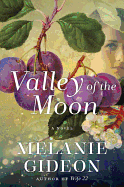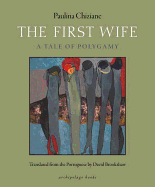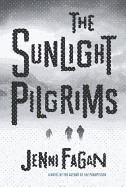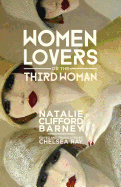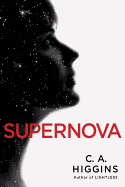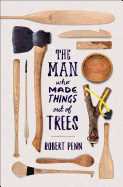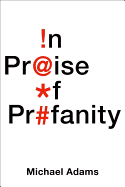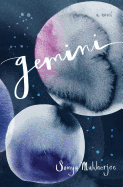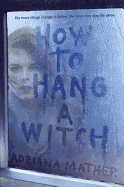Friday, July 29, 2016
"Cats are timeless," replied our inimitable editor Marilyn Dahl when I suggested a story on some first-rate cat titles published earlier in 2016. Well put. Here are three delightfully illustrated novels that, sure as tuna, promise to have readers ages 8 to 12 purring.
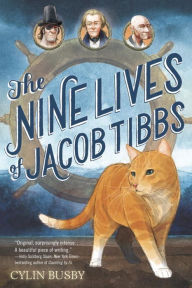 |
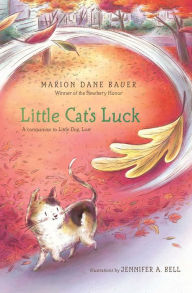 |
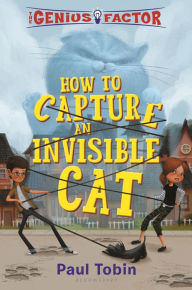 |
"I was born on a ship, the runt of a six litter," begins Jacob Tibbs, the yellow-furred star of Cylin Busby's richly told The Nine Lives of Jacob Tibbs (Knopf). Jacob was born on a ship in Liverpool in 1847. In between threats to toss the little cat overboard, the salty sailors scratch him between the ears as he learns the ropes. Jacob bravely perseveres in the face of loss, danger, and his own limitations, and finally proves himself to be a regal cat-o'-sea.
Little Cat's Luck (Simon & Schuster) by Newbery Honor author Marion Dane Bauer (On My Honor; Little Dog, Lost) is a gentle and heartwarming verse novel written in short, playfully arranged lines about a sheltered calico house cat named Patches who can't resist the call of the wild--a beckoning autumn leaf, actually. She's convinced she will find her own special place out there somewhere, "hidden away,/ snug,/ dark,/ quiet." Encountering surprises and scrapes, friends and foes, she discovers a very unlikely hideaway indeed.
How to Capture an Invisible Cat (Bloomsbury) is a rollicking cat tale by Paul Tobin (Prepare to Die!), the whip-smart, laugh-out-loud funny debut of the Genius Factor series. The invisible cat, named Proton, is almost elephant-sized... and he's trying to kill the sixth-grade narrator, Delphine, host of weekly Cake vs. Pie meetings and only friend of Nate. Proton is inventor Nate's nightmare experiment in cat-enlargement... and the life-threatening, city-squashing cat is just the beginning of their troubles.
Ah, cats. Seafaring, adventurous, murderous... and timeless.
Valley of the Moon
by Melanie Gideon
In 1975, Lux Lysander is struggling with life as a single mom in San Francisco. So when her son goes to stay with his grandparents for two weeks, she's thrilled to go camping alone in Sonoma Valley, also known as the Valley of the Moon. She's enjoying herself, until she's startled awake in the middle of the night.
In 1906, Joseph--a visionary far ahead of his time--has planned Greengage farm to be self-supporting, a place where men and women of all ethnicities can work together peacefully. The farm is functioning perfectly, much to Joseph's satisfaction, when there's a sudden, terrible earthquake. When the ground settles down, Greengage residents discover that the farm is surrounded by a dense and deadly fog, which for months keeps Greengage in isolation. Until, incredibly, Lux Lysander comes striding through the fog.
A beautifully written story, Valley of the Moon captures Lux's longing to be part of something bigger than herself, and the agony of facing a choice between her beloved son in the modern world and the community she comes to love. Comparisons to Brigadoon are inevitable, but Melanie Gideon (Wife 22) transcends the potentially hokey plot to craft a wonderful story about belonging, love and the aching certainty that there's something more out there.
Defying genre categorization, Valley of the Moon could be an excellent choice for a book club seeking a thoughtful yet approachable novel, and is sure to appeal to fans of Time and Again or The Time Traveler's Wife. --Jessica Howard, blogger at Quirky Bookworm
Discover: A single mother travels back in time 70 years, and discovers what's been missing in her life.
The Hopefuls
by Jennifer Close
In the wake of Barack Obama's landmark 2008 presidential win, his campaign staffers--young, eager and flushed with capital-H Hope--flocked to Washington, D.C., to begin their new careers. But for some of them, post-victory life proved bittersweet, especially for the spouses of those staffers. In her third novel, The Hopefuls, Jennifer Close (The Smart One) captures the initial adrenaline rush and the resulting disillusionment through the eyes of Beth, one such spouse.
Though Beth adores her life in New York, she gamely follows her husband, Matt, to the capital after Obama's win and her own layoff. As she struggles to adjust (hating the traffic, the ubiquitous Ann Taylor suits and the absurd government acronyms), Beth wonders if she's made a huge mistake. But when she and Matt meet Ash and Jimmy, a gregarious Texan couple in Matt's work circle, everything seems to click. The four rapidly become best friends, and Beth feels she may have cracked the code of D.C. life after all.
Like so many friendships, though, this one proves complicated, and Close deftly charts the fault lines of jealousy, competition and attraction that run through the couples' intertwined lives. As Matt and Beth flounder in their careers, and Jimmy's star keeps rising, the cracks begin to show in their friendship--and in Matt and Beth's marriage.
While it soberly acknowledges the difficulties of matrimony, Close's narrative is infused with humor, warmth and (yes) hope. Clear-eyed and unflinchingly forthcoming, The Hopefuls is a skillful portrait of a status-crazed city and its young elite. --Katie Noah Gibson, blogger at Cakes, Tea and Dreams
Discover: Jennifer Close's third novel charts a complicated friendship between two young political couples in Washington, D.C., after Obama's 2008 victory.
The First Wife: A Tale of Polygamy
by Paulina Chiziane, transl. by David Brookshaw
When Rami's youngest son accidentally breaks a neighbor's car window, there's no man of the house to take care of it. Rami's husband, Tony, the handsome police chief in Maputo, Mozambique, has a wandering eye and is seldom home. After putting up with his behavior for more than 20 years, Rami decides to take matters into her own hands. One by one, she seeks out the four women who take up so much of her husband's time and attention. Confrontations erupt into violence, but what starts out as fisticuffs turns into four friendships, and all five women show up dressed alike, with their 16 children in tow, to surprise Tony at his 50th birthday party. At first, Tony flees. He then promises to abandon his mistresses. Rami won't hear of it. She demands that Tony marry them all, turning polygamy upside down.
In 1990, Paulina Chiziane was the first woman to publish a novel in Mozambique, where polygamy is legal. Delaying the plot for an occasional songlike poetic outburst, spicing the story with a few jawdropping African sexual customs, Chiziane weaves a big-hearted, seriocomic tale of polygamy and its price. "My husband has become a tourist in his own home," she says. Her outspoken sexual politics produce succinct little firecrackers. "To have only one love in life? Baloney! Only women, forever stupid, swallow that story. Men love every day.... All men are polygamous."
Feisty and exuberant, ferociously candid, The First Wife doesn't disguise the radical, iconoclastic spirit of its narrative. With delightful complications and unexpected plot turns, Chiziane's battle of the sexes is like none other in world literature. --Nick DiMartino, Nick's Picks, University Book Store, Seattle, Wash.
Discover: A wife of 20 years befriends her husband's four mistresses in this tale by the first woman to publish a novel in Mozambique.
The Sunlight Pilgrims
by Jenni Fagan
The Sunlight Pilgrims, the second novel by Jenni Fagan (The Panopticon), opens in November 2020, as temperatures around the world are plummeting to record lows. It is below freezing in England long before winter has officially begun. Dylan's mother has just died, and the family business is being reclaimed by the bank. Left with nothing but his grief, the family gin recipe and the title to a small trailer in Scotland, Dylan boards a bus north to settle into his newly inherited home and try to make sense of his life. There, amidst news reports threatening the coldest winter on record, Dylan meets Stella, the 12-year-old girl next door, and Constance, her mother.
The three form a trio of town misfits: Dylan is an "incomer"; transgender Stella struggles to be seen as the girl she knows she is; and Constance is known to have had two concurrent lovers for over two decades. But what the townspeople see as imperfections are ultimately what make each character, individually and then again as a unit, the perfect center for Fagan's story. Their warmth and humanity stand out in stark contrast to the barren, cold landscape of the Scottish Highlands and the impending winter. Because ultimately, The Sunlight Pilgrims is not about catastrophe or disaster or climate change (though it is, in some ways, about all of them). It is about what happens in between and around and in spite of those big things: the everyday moments of life and its machinations, the work we do to find our place in a chaotic world, and what it means to love and be loved. --Kerry McHugh, blogger at Entomology of a Bookworm
Discover: In a near future on the precipice of a new Ice Age, three misfits struggle to make their way in the world.
Heroes of the Frontier
by Dave Eggers
It's tempting to describe Dave Eggers's Heroes of the Frontier as a story about a woman who goes crazy. The novel begins with Josie having already taken her kids to Alaska on a whim, with no plans, little money and only a vague idea as to why they've traveled north in the first place. What follows instead is a bittersweet depiction of what it means to be a parent, and how a thirst for adventure can sometimes be a cry for help.
Heroes is a picaresque novel, following Josie and her children as they drive through Alaska during a particularly bad rash of wildfires. They stay in RV parks, squat in abandoned mines, and attempt to find meaning in their limited interactions with other people. As their travels prove increasingly fruitless, Eggers (A Hologram for the King) keeps a cool hand, never writing Josie with a modicum less respect even as it becomes clear that she's making terrible decisions for her and her children. By the time the three are thrust into real danger, the novel has lulled the reader into thinking it isn't much different than what's come before. It's a neat magic trick, and a testament to Eggers's skill.
Although it takes places in the vast expanse of nature, Heroes is a small book. Josie's children dart in and out as a narrative chorus, but her innumerable failures are the meat of the novel. And in that way, it tenderly portrays a woman who tried, knowing at least that was something. --Noah Cruickshank, marketing manager, Open Books, Chicago, Ill.
Discover: A mother traverses Alaska in a bittersweet novel of parenting and regret.
Women Lovers, or The Third Woman
by Natalie Clifford Barney and Chelsea Ray, editor, transl. by Chelsea Ray
The works of Natalie Clifford Barney, an American who lived in Paris and wrote in French, are little known, and her 1926 autobiographical novel Amants féminins was published for the first time only in 2013. Women Lovers, or The Third Woman is the first English translation.
A scholarly introduction by Melanie C. Hawthorne and a translator's essay by Chelsea Ray place this work in the context of modernism and evolving gender definitions while detailing Barney's biography. These introductory materials are revealing and absorbing in their own right, if a little dry in their academic tone. The novel, however, leaps energetically to life.
Barney's protagonist N., who stands in for the author, believes in love among women as an ideal of pleasure and friendship. "Friendship is simply love without pleasure!" she declares. "Love is heavy for two to carry, and happiness is monotonous." With a new lover, M., she establishes an "association" by which the two women will comfort those in romantic distress by sharing their affections. When she brings such a woman into her relationship with M., however, N. is unexpectedly left out, jealous and hurt.
Barney is perhaps best known for her aphorisms, and she uses such pithy fragments as well as screenplay-style dialogue, mock journal entries, a combination of first- and third-person perspectives and even drawings to tell her story. Women Lovers, while brief, is thus a noteworthy and historically significant piece of experimental literature, queer theory and a captivating roman à clef all at once. --Julia Jenkins, librarian and blogger at pagesofjulia
Discover: This is an autobiographical, sprightly 1926 novel of a Belle Époque lesbian love triangle, written in French by an American and appearing in English for the first time.
Science Fiction & Fantasy
Supernova
by C.A. Higgins
Physicist C.A. Higgins follows up her gripping debut, Lightless, with a focused and spellbinding sequel, Supernova. The spacecraft Ananke--a newly born artificial intelligence--must learn to cope with her immense power and burgeoning moral sense. Althea, the mechanic, computer expert and AI mother, sees her influence over the ship slipping away as Ananke relies more on computer logic than human emotion in interactions with other crews and spacecraft. When Althea takes drastic measures to rein the ship back under her control, the battle of wills turns horrifying and deadly.
Constance, known as Huntress, travels the solar system on her own ship, fighting a bureaucratically totalitarian government whose reach spreads across the solar system. Her control of the resistance force, however, begins to fray at the edges while she attempts to rid the planets of anyone allied with the government. Weathering uneasy alliances and outright betrayal, she discovers the true price of single-minded, violent fanaticism.
Higgins unapologetically places strong women in the foreground of a cosmic power struggle; she writes resilient female characters who make their own plans and decisions, unfettered by the influence of men. Constance may take into account the perspectives of her male allies, but she chooses her own direction, while Althea alone must come to terms with her singular role in Ananke's upbringing.
With Supernova, Higgins explores the literal astronomical meaning of the title, along with more metaphorical implications, as both the resistance and Ananke's powerful amoral intelligence come to a possibly explosive end. --Rob LeFebvre, freelance writer and editor
Discover: Supernova is a captivating story of rebellion, freedom and the responsible use of power in a solar system at war.
Nature & Environment
Water in Plain Sight: Hope for a Thirsty World
by Judith D. Schwartz
Judith D. Schwartz is a journalist and the author of Cows Save the Planet, about soil and land restoration. In Water in Plain Sight, she broadens her gaze to water scarcity, the natural water cycle and climate change. She examines how human activity has damaged global water and climate systems and provides an unusually hopeful vision of what we can do to restore them.
The desertification of land worldwide has resulted from mismanagement, including "deforestation, fire, poor grazing management, tillage and inappropriate use of irrigation." Lands stripped of their native plant and animal life swing between flood and drought, crops fail and human livelihoods crumble. Schwartz explains how healthy soils support strong water cycles, how fossil fuel-based agricultural techniques destroy them, and the biological techniques that can revive them, including a new approach to holistic grazing management. She visits experimental ranches in South Africa, Mexico and Zimbabwe where scientists and farmers have successfully introduced carefully managed cattle to restore soil, grasses, wildlife and fresh water supplies. A West Texas farm has found a way to harvest 60 gallons of water from condensation every day, and reforestation projects in Brazil, Kenya, Java and Ethiopia have brought back rainfall, rivers and streams.
Humility is useful, says Schwartz, but so is recognizing our power to catalyze and support natural processes. "We could say that every acre of land on the planet offers a choice, whether toward enhancement and health and complexity or toward degradation. It's up to us." --Sara Catterall
Discover: Human mismanagement of land has resulted in water scarcity, but we have the power to restore natural systems that produce the fresh water we need.
The Man Who Made Things Out of Trees
by Robert Penn
How many different items can be created from a single ash tree? This was the question Robert Penn pondered and set out to answer one winter when he felled an ash tree that had been standing for more than 100 years. The crown and upper branches he cut into stove-length pieces and split by hand for firewood. The straight trunk he had sawn into boards of varying thicknesses, which he gave to master woodworkers to transform into useful objects. Ax handles, bowls that nestled inside one another, a toboggan, a paddle, paneling for his office and a matching desk are just some of the 44 ways the wood was used.
Penn expertly combines the story behind each creation made from the stately tree with scientific data on trees--the ash in particular--as well as the cultural significance of wooden objects and trees throughout human history. Lovely descriptions enhance Penn's prose: "cast in tender light and naked of leaf, [the ash trees] were grey-green barked, sparsely branched, tall, slender and austere with twigs that rose and fell and rose again at their tips to end in the distinctive 'witches' claws', which scratched against the pearl-grey sky. Ash wears the winter with a grace that no other tree species can match, hence its nickname--'Venus of the Woods'." The Man Who Made Things Out of Trees honors the ash Penn felled; it's a swan song for a mighty specimen that once stood in Callow Hill Wood in Britain. --Lee E. Cart, freelance writer and book reviewer
Discover: A thorough and poetic discourse on the ash tree and the multiple ways it's been used throughout the centuries.
Reference & Writing
In Praise of Profanity
by Michael Adams
Linguist Michael Adams (From Elvish to Klingon) is a historian and lively defender of the English language. He never shies away from the provocative, and his imaginative, anti-academic approach holds great appeal. In Praise of Profanity is an illuminating, creatively presented exposition on the use of expletives--from four-letter words to latrine graffiti--throughout the ages. His aim in writing about language we're not supposed to use is to "illustrate profanity's very humane aspects, how expressive language participates in the human comedy and the human tragedy, and most often the human tragicomedy." By blending literary and cultural criticism, Adams sets up a defense of profanity that shatters over-simplified taboos, while outlining and illustrating stylistic motivations and the many valuable benefits expressive swearing can offer via the personal, emotional, societal and aesthetic.
Attitudes about using bad language are paradoxical and persistent, as the "functional need to express powerful emotion is inherently human" and goes back to Chaucer's often crude and bawdy Canterbury Tales. Adams writes that "were there ever a time to admire profanity, it would be now," as society is enmeshed in a profuse and profligate "Age of Profanity." Readers won't necessarily come away from this book swearing a blue streak. But the next time they're compelled to light up with an expletive--or they hear someone cursing up a storm--they'll more than likely remember Adams's thought-provoking, contemporary investigation that casts a new light on the darker side of the English language. --Kathleen Gerard, blogger at Reading Between the Lines
Discover: A linguist presents an entertaining, well-researched examination of the role of profanity in language and society.
Children's & Young Adult
Gemini
by Sonya Mukherjee
Clara and Hailey are identical twins living in "entertainment-forsaken Bear Pass," contemplating questions typical of most 17-year-olds, with one significant difference: the girls are conjoined, connected at their midpoint ("or butt-to-butt, if you want to get all technical about it," says Clara).
Their parents have spent the girls' entire lives working to convince the twins that they're normal, even moving to a small California community to keep them in a supportive bubble. But as their friends start making plans for college, Clara and Hailey grapple with a concept they haven't thus far been free to consider, thanks to their mother's passionate feelings about the wrongness of separating healthy conjoined twins: Could they be separated? Should they? And also, what about boys? Clara, who is an aspiring astronomer, says, "[A]t some point I started worrying about Gemini, the celestial twins. Were they glad to spend billions of years together in the sky, always on display, or would they rather wander apart and explore?"
Just as they must do in almost every aspect of their lives, pink-haired, tattooed artist Hailey and introverted Clara take turns narrating chapters in Sonya Mukherjee's compelling first novel. Whether they're confronting their well-meaning parents, bickering with each other or flirting with their crushes, Clara and Hailey are unusual yet familiar and appealing protagonists. Readers--just like their friends--will move rapidly beyond voyeuristic curiosity to empathy and genuine liking for the girls. --Emilie Coulter, freelance writer and editor
Discover: Seventeen-year-old sisters Clara and Hailey contemplate college, love and the universe, and whether they can have it all as conjoined identical twins.
How to Hang a Witch
by Adriana Mather
In How to Hang a Witch, Adriana Mather concocts an exciting contemporary story of ghosts, witches and an ancient curse, and spices it with just the right amounts of mystery and romance. The author, like her protagonist, is a direct descendant of Cotton Mather, the Puritan minister who incited the witch trials in 17th-century Salem, Mass.
When 15-year-old "Sam" Mather's father slips into a coma, she and her stepmother, Vivian, sell their New York apartment so they can pay his medical bills. They move into the enormous Mather home in Salem, which has been in Sam's family since Puritan times. Sam, with her "affinity for sarcasm" and a reputation for trouble, quickly finds that, as a member of the witch-hanging Mather clan, she's not welcome in Salem. Her most aggressive enemies at school are the Descendants, a group of rich goths whose ancestors were the accused and hanged witches. To make matters worse, Sam is terrified her dad will die, and all Sam and her stepmother do lately is fight. Luckily, handsome neighbor Jaxon appears to be on her side, as does the gloomy but irresistible ghost Elijah. Sam certainly needs all the help she can get when people begin dying and the whole town looks to blame her for the body count.
Sam starts to see the witch trials as "a scarier version of high school," which happened "because no one stood up for the accused." Mather delivers a timely condemnation of bullying and the politics of mass hysteria, while still completely charming her readers with large doses of suspense and steamy attraction. --Lynn Becker, blogger and host of Book Talk, a monthly online discussion of children's books for SCBWI
Discover: In this topical, modern-day ghost story, descendants of the Salem witch trials fight a centuries-old curse.
| Advertisement Meet belle bear! |


